When it comes to city passes and travel cards, it’s usually fairly easy to figure out whether they would be worth it for you or not. For things like the Paris Pass or London Pass, they have a list of the most popular attractions and how much they cost, right there for you to see. The Swiss Travel Pass, however, is shrouded in mystery, or at least it was until I spent several days tracking down all of the prices and benefits.
A great many of the visitors and commenters on my popular page about where to go in Switzerland on a short visit are wondering whether the Swiss Travel Pass is a good deal. Embarrassingly, I’ve always had to answer that I found the pass too confusing to confidently advise people on. Now that has all changed, after literally days of research.
Note: This article was last updated in February, 2024.
Disclosure: This is a reader-supported website and some of the links are affiliate links where a small commission is paid to help keep this site going, but the cost to visitors is the same. The Swiss Travel Pass seems quite expensive at first, so it felt like it might be hard to get your money’s worth out of it. As it turns out, it’s pretty easy to get good value, and it’ll be a good deal for many visitors.
New in 2024
Prices increased an average of 5.9% from 2023 on the Swiss Travel Passes, but the Half Fare Card remains at CHF120, which is where it’s been for many years. Train fares in the country increased by similar percentages so the value is basically unchanged. There were no other notable changes to service or the included attractions and train routes.
>>>Buy the Swiss Travel Pass online
Where to stay in Interlaken and the Lauterbrunnen Valley
Since most people reading this will be visiting the Interlaken area and I get so many questions about it, I decided to write a detailed guide on which area to stay in while visiting this area.
>>>Where to stay in Interlaken or the Lauterbrunnen Valley in Switzerland
I included many huge photos in that post so readers will be able to get a better idea of what each place looks like and they are worth a look by itself.
>>>Lucerne or Interlaken: Which to visit and how long to stay?
The article just above will help you decide on how long to spend in each of Switzerland’s two best tourist areas.
Are you 100% sure where you want to go in Switzerland? This should help
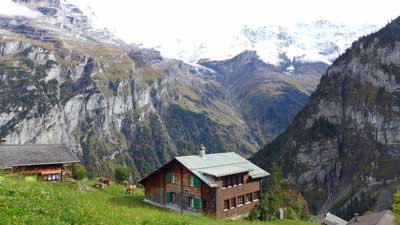
Zurich and Geneva are pleasant but dull. The good news is that Switzerland is packed with amazing sights and none of them are the big cities. If you aren’t 100% locked in yet, please read the article below and I think you’ll enjoy it.
Is the Swiss Travel Pass a good deal? Here's the short version

The bottom line is that the scenery, train journeys, and cable car rides in Switzerland are stunning and not found anywhere else in the world. They are also quite expensive if you pay for them one at a time. So no matter how you visit Switzerland, you are going to be paying quite a bit, or skipping the absolute best things that you’ve come there to see.
With good planning it’s quite easy to get great value out of a Swiss Travel Pass, but it might be a poor choice for those who don’t like to plan ahead. You can easily do a scenic train ride and a cable car in the same day, and still have time to do a scenic hike in the process.
First class or second class? Good news for most people
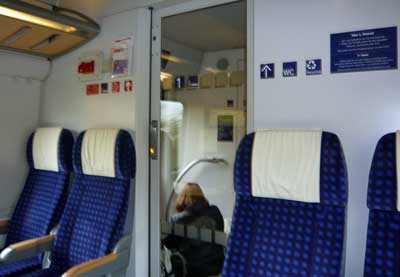
That said, Swiss Trains are literally the nicest in Europe and even the Second Class seats and carriages are nicer and roomier than trains in neighboring countries. The First Class seats are larger and nicer with only 3 across the cabin instead of 4, but honestly Second Class is perfectly comfortable for almost everyone.
Again, First Class on European trains like this is generally popular with business travelers where the company is paying and they need to get work done during the ride, and also senior citizens who don’t want to worry about a carriage full of backpackers. For most of the rest of us, Second Class is more than comfortable enough and the seat width and legroom compare to business-class airline seats. I’m a big and tall guy and I almost always travel in Second because it’s plenty comfortable enough and all the seats arrive at the same time anyway.
The longer you'll be in Switzerland, the better deal a Swiss Travel Pass will be
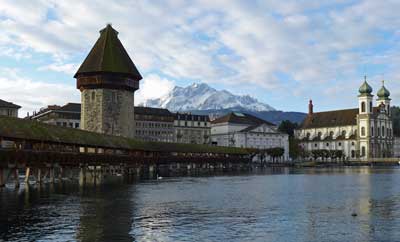
In other words, if you are staying 5 days or fewer, you have to do the math to determine your best option. But if you are spending even 6 or 7 days in Switzerland then the 6-day or 8-day Pass is almost guaranteed to be a great deal and your best choice. Once you have a Swiss Travel Pass you’ll absolutely love the ability to just hop on any train (excellent trains, always on time) and most boats and cable cars without having to worry about the cost. The per-day cost of an 8-day Pass even if you only use 6 of those days is about CHF65, and Switzerland is filled with amazing train rides and boats and cable cars that can get you that much value before noon each day.
Schilthorn (50% discount) and Jungfraujoch (25% discount) are cheaper with a Swiss Travel Pass
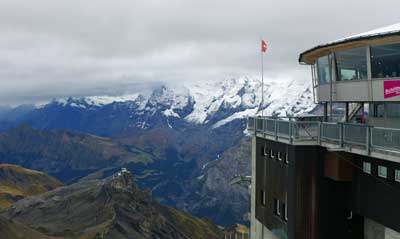
Both of those peak experiences are extraordinary and different from each other. Even so, compared to Jungfraujoch, Schilthorn is also faster and more comfortable on the way up and down. You can enjoy an excellent visit to Schilthorn in 4 hours or so (or a bit longer if you eat at the spinning Piz Gloria restaurant at the top), while a visit to Jungfraujoch requires closer to 6 hours.
NOTE: Schilthorn closes for maintenance for a week or two in late November most years.
Consider the Swiss Half-Fare Card instead
If you AREN’T going to be doing two or more of the long (and expensive) scenic train trips, you will get much better value out of the Swiss Half-Fare Card, which is explained a bit below.
Mt Rigi, near Lucerne, is 100% covered by the Swiss Travel Pass
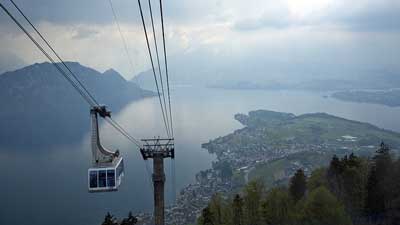
Is a Swiss Travel Pass right for you?
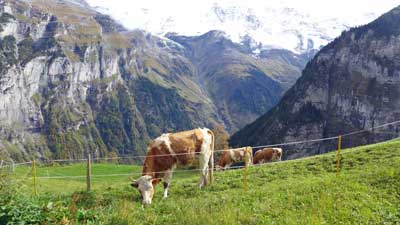
Most people only visit Switzerland for 5 or 6 days at most, so the 3-day and 4-day passes are the ones to focus on. But if you are staying for 8 days or more, those longer passes are almost certainly a great deal for you.
Long story short, if you plan on doing 2 of the more expensive scenic trains and the Jungfraujoch railway or the Schilthorn cable car, then the pass will save you money. Switzerland is expensive, but it’s worth it, and the travel pass can help make it a bit more affordable.
What the Swiss Travel Pass includes
- Free rail travel on normal trains and most scenic trains
- Discounted travel (about 50%) on popular tourist mountain trains
- Discounted travel (about 50%) on popular tourist cable cars
- Free travel on public transport in 75 towns and cities
- Free entry to around 500 museums in Switzerland
The Swiss Travel Pass covers the fare on the most popular scenic and panoramic trains. You can choose a normal seat in a regular carriage for no additional cost, but there is a supplement of CHF8 to CHF49 for a reserved seat in one of the special panorama carriages on these routes.
Prices of the 2024 Swiss Travel Pass
1st Class
- Adult 3-day Pass: CHF389
- Youth (4 to 25) 3-day Pass: 274
- Adult 4-day Pass: 469
- Youth (4 to 25) 4-day Pass: 330
- Adult 6-day Pass: 602
- Youth (4 to 25) 6-day Pass: 424
- Adult 8-day Pass: 655
- Youth (4 to 25) 8-day Pass: 469
- Adult 15-day Pass: 723
- Youth (4 to 25) 15-day Pass: 512
2nd Class
- Adult 3-day Pass: CHF244
- Youth (4 to 25) 3-day Pass: 172
- Adult 4-day Pass: 295
- Youth (16 to 25) 4-day Pass: 209
- Adult 6-day Pass: 379
- Youth (16 to 25) 6-day Pass: 268
- Adult 8-day Pass: 419
- Youth (16 to 25) 8-day Pass: 297
- Adult 15-day Pass: 459
- Youth (16 to 25) 15-day Pass: 328
Swiss Travel Pass Flex
This version costs a bit more, but you don’t have to use the travel days consecutively. It’s a great option for anyone who won’t be taking longer train rides each day.
- Adult 3 Flex days in 1 month (1st Class): CHF445
- Adult 3 Flex days in 1 month (2nd Class): 279
- Adult 4 Flex days in 1 month (1st Class): 539
- Adult 4 Flex days in 1 month (2nd Class): 339
- Adult 6 Flex days in 1 month (1st Class): 644
- Adult 6 Flex days in 1 month (2nd Class): 405
- Adult 8 Flex days in 1 month (1st Class): 697
- Adult 8 Flex days in 1 month (2nd Class): 439
- Adult 15 Flex days in 1 month (1st Class): 755
- Adult 15 Flex days in 1 month (2nd Class): 472
Where to buy the Swiss Travel Pass
The Swiss Half-Fare Card – A better option for many visitors
Far less confusing than the Swiss Travel Pass, you can instead get a Swiss Half-Fare Card, and it will be a better deal for many travelers. The price is lower and it’s much easier to do the math, and the discounts are greater on some things as well.
- Swiss Half-Fare Card for 30 days: Adults – CHF120 or US$129
What you get:
Those who buy the Swiss Half-Fare Card will get 50% discount on all trains, buses, and boats in Switzerland for up to 30 days, as well as 50% off all public transportation in 75 cities and towns.
>>>Buy the Swiss Half-Fare Card
Why the Half-Fare Card is a better deal for many
While the Swiss Travel Pass is a great deal for those doing many of the expensive scenic journeys and mountain sights within a few days, it’s not good value for those who are doing fewer of the expensive trips and/or those who are staying longer. Also, the Swiss Travel Pass only provides a 25% discount on the amazing Jungfraujoch Railway, which costs between CHF120 and CHF224 return depending on your starting point, while the Half-Fare Card provides a 50% discount.
The math is simple as well. You can just add up the cost of the trains, boats, and buses you’ll be taking while in Switzerland, and if the total is more than CHF240 or so, the Half-Fare Card will save you money.
Example itinerary:
- Zurich to Interlaken train (2nd Class): CHF50
- Schilthorn Cable Car: CHF112
- Jungfraujoch railway from Interlaken: CHF205
- Interlaken to Lucerne train (2nd Class): CHF33
- Mt Rigi roundtrip from Lucerne: CHF84
- Engelberg (near Lucerne) to Mt. Titlis Cable Car: CHF92
- Lucerne to Zurich train (2nd Class): CHF25
Total per person: CHF601
Total with Half-Fare Card (including price of card): CHF420.50
It would be tough to do all of those things in 4 days, although it is possible. If you bought a 4-day Swiss Travel Pass here is how it adds up:
4-Day Swiss Travel Pass: CHF259
Supplements for Schilthorn, Jungfraujoch, and Mt. Titlis: CHF203.25
Total cost: CHF462.25
Bottom line on the Swiss Half-Fare Card
Since the Half-Fare Card lasts 30 days and provides a larger discount on Jungfraujoch, it is better value for visitors who want to include that scenic top-of-Europe rail journey on their trip. The discounts also add up more quickly on Schilthorn and Mt. Titlis trips, just to name two examples, and you don’t have to take many longer rail journeys to get value out of the Half-Fare Card.
Swiss Saver Day Pass (A one-day unlimited travel pass)
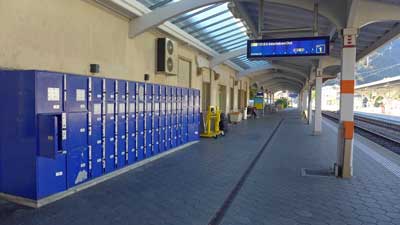
If you buy the Saver Day Pass at least 21 days in advance (and up to 60 days in advance) the 2023 cost is:
- 2nd Class (with Half Fare Card): CHF29
- 1st Class (with Half Fare Card): CHF82
- 2nd Class (with no Half Fare Card): CHF52
- 1st Class (with no Half Fare Card): CHF97
Once you research the normal cost of Swiss train fares you’ll see that the above prices are a very good deal for anyone riding more than 150 kilometers or so in a day. If you are just going, for example, from Zurich to Lucerne or Interlaken on a day, it’ll be cheaper to just buy that ticket individually. But if you are going from Geneva or Montreux to Interlaken or Lucerne then the Saver Day Pass will be much cheaper. Better still, you can use a Saver Day Pass to go from Interlaken to Geneva and back on the same day on the Goldenpass line and returning on the faster train through Bern, and it will still all be included for free.
If you don’t buy a Saver Day Pass at least 14 days in advance it’s more expensive, and if you only buy 1 to 3 days in advance it’s VERY expensive, so the key is to buy early. This is all confusing, but the Saver Day Pass should be a great option for many people only in Switzerland for one to three days.
Popular Swiss panorama scenic trains
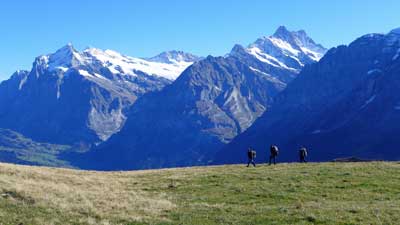
- Glacier Express
- Route: Zermatt to St. Moritz
- Train type: Panorama
- Journey time: 8 hours 3 minutes
- Distance: 291km
- 1st Class fare: CHF272
- 2nd Class fare: CHF159
- Compulsory seat reservation fee: CHF44 or 49
- Supplement for Swiss Pass holders: 13 to 33 for panorama carriage
- Bernina Express
- Route: Chur to Tirano and Lugano
- Train type: Panorama and bus
- Journey time: 4 hours 13 minutes and 3 hours 10 minutes
- Distance: 148km and 90km
- 1st Class fare: CHF113
- 2nd Class fare: CHF66
- Compulsory seat reservation fee: CHF32
- Supplement for Swiss Pass holders: 10 to 14 for panorama carriage
- GoldenPass Line
- Route: Lucerne to Montreaux
- Train type: Panorama
- Journey time: 5 hours 8 minutes
- Distance: 191 km
- Prestige Class fare: CHF131
- 1st Class fare: CHF96
- 2nd Class fare: CHF56
- Supplement for Swiss Pass holders: 8 to 15 for panorama carriage
- Gotthard Panorama Express (formerly Wilhelm Tell Express)
- Route: Lugano or Locarno to Lucerne
- Train type: Panorama and boat
- Journey time: 5 hours 21 minutes
- Distance: 182 km
- 1st Class fare: CHF164
- 2nd Class fare: CHF135
- Supplement for Swiss Pass holders: 39 to 49 for panorama carriage
- Swiss Chocolate Train
- Route: Montreux to Broc round trip
- Train type: Panorama or First Class
- Journey time: X hours X minutes
- Distance: 82 km
- 1st Class fare: CHF99
- 2nd Class fare: 89
- Supplement for Swiss Pass holders: 39
Popular Swiss scenic and theme trains
The scenic trains below are also extremely popular as sightseeing journeys rather than just as transportation, but can be used as both.
- Jungfraujoch round trip
- Route: Interlaken to Jungfraujoch
- Train type: special mountain train
- Journey time: 4 hours 41 minutes, round trip, plus time on top
- Distance: 73 km
- 1st Class fare: N/A
- 2nd Class fare: CHF224
- Supplement for Swiss Pass holders: 147 (so, a saving of CHF77)
- Gornergrat Railway
- Route: Gornergrat Railway
- Train type: Cog railway
- Journey time: 44 minutes return
- Distance: 10 km
- 1st Class fare: N/A
- 2nd Class fare: CHF90
- Supplement for Swiss Pass holders: 45
- Rigi round trip
- Route: Lucerne to Rigi
- Train type: Cog railway
- Journey time: 3 hours 25 minutes, plus time at the top
- Distance: 58 km
- 2nd Class fare: CHF78
- Supplement for Swiss Pass holders: None (this one is free with the pass)
- Mt Rigi Excursion (one-way and walk down)
- Route: Lucerne to Mt Rigi
- Train type: cogwheel train and/or cable car
- Journey time: 45 minutes up
- 1st Class fare: N/A
- 2nd Class fare: 49
- Supplement for Swiss Pass holders: 0
- Lotschberg Mountain Route and Centrovalli
- Route: Bern to Locarno
- Train type: Narrow gauge
- Journey time: 4 hours 40 minutes
- Distance: 212 km
- 1st Class fare: CHF158
- 2nd Class fare: CHF90
- Supplement for Swiss Pass holders: 5
- Jura round trip (Watchmaking Tour)
- Route: Neuchatel through Jura
- Train type: Regular
- Journey time: 3 hours 0 minutes
- Distance: 143 km
- 1st Class fare: CHF168
- 2nd Class fare: CHF108
- Supplement for Swiss Pass holders: 0
- Pre-Alpine Express
- Route: St. Gallen to Lucerne
- Train type: Regular
- Journey time: 2 hours 15 minutes
- Distance: 146 km
- 1st Class fare: CHF83
- 2nd Class fare: CHF47
- Supplement for Swiss Pass holders: 0
- Jura Foot Line
- Route: Basel to Geneva
- Train type: Regular
- Journey time: 2 hours 40 minutes
- Distance: 248 km
- 1st Class fare: CHF132
- 2nd Class fare: CHF75
- Supplement for Swiss Pass holders: 0
Popular Switzerland cable car rides
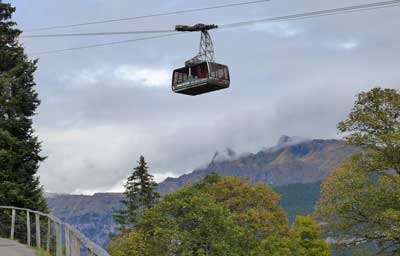
- Schilthorn
- Route: Stechelberg (Lauterbrunnen) to Schilthorn
- Train type: cable car
- Journey time: 1 hour
- 2nd Class fare: CHF108
- Supplement for Swiss Pass holders: 54
- Engelberg to Mt. Titlis cable car
- Route: Engelberg to Mt. Titlis
- Train type: cable car
- 2nd Class fare: CHF96
- Supplement for Swiss Pass holders: 46
The Swiss Travel Pass also includes free museum admission, but…
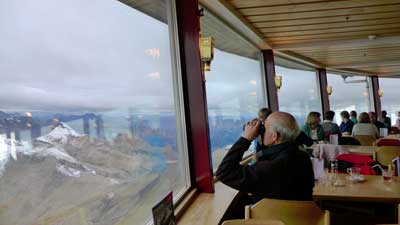
The problem is that the museums are only free on valid travel days, and almost no one would visit more than one or two museums with a Swiss Travel Pass. The trains and cable cars are so expensive that the pass gives very good value to cover those, so you don’t want to waste precious sightseeing time walking through a museum that only costs CHF10 anyway.
In other words, calculate the value of a Swiss Travel Pass on the travel savings only, and if you visit a museum here or there, then great. Most people are better off trying to squeeze in an additional train ride each day, and ignoring the museums. Switzerland is all about the outdoor scenery. As nice as the museums may be, they are not why you are there.
The pass includes free public transport in most Swiss cities
Similar to the free museum part of the offer, it’s best to ignore or minimize the value of free public transportation. It could be helpful in Zurich, but in most other Swiss tourist towns you won’t need much public transport. In fact, in Interlaken, each hotel or hostel guest automatically gets a card for free public transportation within the town (including between the two train stations).
So you might use a ride or two each day on public transport, but that won’t add up to much in terms of value of your Swiss Travel Pass.

Hi Roger,
Thank you, most helpful.I do have a further query. We shall be around Interlaken for several days and keen to do the Jungfraujoch train journey. Given it is tourist season, should we buy tickets in advance or buy once in Interlaken?
Cheers
Barrie
Barrie,
This is a tricky topic. The challenge is that any day of the year there can be thick clouds on tops of the highest peaks, although usually that only lasts for a few hours at a time. Often it’s sunny in the morning and cloudy in the afternoon, and sometimes the other way around. When the clouds are thick you can’t see anything and they sometimes don’t even run the trains. So it’s best to book when you are there once you know that it’s going to be clear. Usually there is plenty of room for everyone, but if it’s been cloudy for a couple days it can get busy so you have to be ready to book as soon as you are sure. If you book days or weeks in advance you might not be able to see anything once on top. Best of luck with this. -Roger
Thanks Roger for your response. We just have less than a month for our travel, so i’m guessing we dont have much options with regards to buying train tickets in advance. We are planning to travel overnight to Swiss-Paris and Paris – Brussels also. Have you ever tried Flix bus? would you recommend Flix bus to these destinations ?
Also if we intend to do 3 days- Jungfrau , Lucerne,Schilthorn and end the Swiss trip with Mt.Titlis, which place would be these best for us to stay? looking for a place that will help us get around to these 3 places easily and the last night we intend to travel to Paris.
Thomas,
Even if you don’t have a month, buying train tickets as early as possible will usually save money. I haven’t tried Flixbus. I’m a larger guy and I really struggle to sleep even on night trains, much less on night buses. Also, I really love the trains and the scenery during the day on most routes. The prices look great though so if you think you can actually sleep then it seems like it’s worth a try.
For Schilthorn and Jungfraujoch you could stay in Lauterbrunnen, which is a hub for both, or you could stay near the Interlaken Ost train station, which has more hotels and is a short ride from Lauterbrunnen. For Titlis it’s best to start from Lucerne. It takes two hours to get between Interlaken and Lucerne so it’s not ideal to do that as a day trip that also included a long activity. Interlaken Ost is the main hub in the area and it would be fast to get to Paris from there. -Roger
Hi Roger,
We are planning to do enter Swiss by flight, a day in Zurich and then move to Interlaken for 3 days- Jungfrau , Lucerne,Schilthorn and end the Swiss trip with Mt.Titlis. I am planning to take a Swiss pass for my family(2 adults + 1 child(4 years). We plan to go to Paris from Interlaken, i believe we can use the Swiss pass till Basil and then do we need to change trains ? If so is there an option like Swiss pass in France ? We intend on staying 2 days in Paris and also to visit Disney land.
Then we intend to visit Brussels, but i’m not sure how to go from Paris to Brussels. Is it cheaper to buy Swiss to Paris and Paris to Brussels train tickets at the time of travel ? or do we need to get them in advance ?
Thomas,
That sounds like a great trip filled with highlights. Yes, you can use a Swiss Travel Pass to travel for free to Basel and then you’ll change trains to reach Paris. There are rail passes for France, but they aren’t good value for most people including you. You’ll be much better off buying a separate ticket on a train from Basel to Paris and then a separate ticket from Paris to Brussels. If you buy them at least a month or so in advance they will be reasonably cheap, and definitely cheaper than a rail pass for France. Buy those last train tickets as early as you can for the lowest fares and most departure options, from the official France rail website. -Roger
Hi Roger,
Thank you for a very helpful article and commentaries which have informed our decision to purchase a Swiss Travel Pass. We are from New Zealand, now retired and in Switzerland mid to late August.
We finish in Zermatt and then catch the various trains to Chamonix to start the Tour de Mont Blanc walk the following day. Because it is tourist season and the number of train changes, would we be wise to reserve seats on the day of travel [Saturday 24th August] or just turn up at the station on day of travel with a good chance of getting seats all the way to Chamonix? There seems to be frequent trains at each train change.
Also, looking at the rail map it looks as if the STP is valid all the way to Chamonix, rather than just to he Swiss/ French border. Is this correct?
Cheers
Barrie
Barrie,
Yes, the Swiss Travel Pass does cover the entire train journey to Chamonix. The last section of the journey is on a French train, but the website clearly says that it’s included in the STP.
My hunch is that you’ll be fine without seat reservations. The Swiss Travel Pass website emphasizes that you can just hop aboard and show your pass to the ticket person as they come by. In my own experience, the only European trains that tend to be full are the early-morning departures between large cities, like Zurich to Geneva for example. For departures after 9:30am or so, the trains are usually half full, and in First Class they are even less full.
If you happen to get unlucky (maybe there is a big group on that same train?) then you have the option of standing up until someone gets off at another station. Or you could just wait on the platform for the next departure, which is usually an hour away and sometimes less. On the other hand, seat reservations usually only cost around US$5 to US$10 in most of Europe, so for peace of mind it might be worth it. Let me know if you have any other questions. -Roger
Hi Roger,
Thank you so much for this information. It has really helped in my plans for Switzerland. I plan on visiting Swiss Skyline, Schilthorn on August 2nd, traveling by public transportation from Zurich. Am I understanding correctly that Zurich to Interlaken train is the correct one I would take to get to swiss skyline? And it stops in Bern? i ask because I would like to visit Bern on my way back to Zurich. I am having trouble figuring out how to book my train travel, not sure if I can trust google maps public transportation directions. Help Please!
Thanks!
Ashlie
Ashlie,
I’m happy to hear that this is helpful. Yes, from Zurich or Zurich Airport you’d take a train to Bern and then change for a train to Interlaken Ost (east), and then change to a different train line at the same station to Lauterbrunnen, and then the bus to the cable car station in Stechelberg and then the cable cars up Schilthorn. Google Maps is pretty good, but I’ve seen it make mistakes on things like this so I don’t trust it either. The best thing to do is to buy tickets from the Swiss Rail website, which obviously has all the time tables as well. Let me know if you have any other questions. -Roger
Hi Roger,
Thank you for taking the time to post your blog which has shed some light into the one of many passes available in switzerland. However, I am still struggling to determine the best value pass for my trip.
I plan on travelling during 16th April for 5 nights and the trip is:
16th – depart from venice to stay in luzrne as base. Go to zurich and rhine falls. back to luzern.
17th – luzern to mt titlis, then to mt rigi, then back to luzern.
18th – depart for grindelwald and make as base for 3 nights. Hike gimmewald and back to grindelwald
19th – jungfraujouch day trip and back to grindelwald.
20th – Mt. schilthorn day trip and explore interlaken. Back to grindelwald
21st – depart for Milan.
As i am doing the the expensive train ride, i am not sure if the swiss pass or half price is better. The other thing that is tricky is that I am going to be there for 5 nights and the travel pass only has 4 or 8 days in which the 8 days would be too much and expensive.
And if you have any comments on the travel plan itself please do advise (whether realistic, too much go and back or any other). I would definitely appreciate it.
Many Thanks,
Danial
Danial,
I see what you mean. If this was a 3-day or 4-day trip the Swiss Travel Pass would probably be best. In this case I think your best option would be to buy a Half Fare Card and then also buy a Saver Daily Pass for your Schilthorn day, and possibly also your Mt. Rigi day. With the Half Fare Card and buying at least two weeks in advance, those Saver Passes are great value. You’d just have to add up the main expenses on each day and see which days would be cheaper with a Saver Pass. I’m sure you’ll have a fantastic time. -Roger
Would appreciate a reply so i can plan the trip
Hi,
Just went through the article and all the comments. I would like to thank you for the time and effort you put in to help so many of us who are confused
I’m planning a 5 day Switzerland trip for my parents (age 61 and 55) . Following is the itinerary that i made for them.. would like to get your advice on it.
September 27 : Paris to Basel to Lucerne .. ideally reach by afternoon and spend the day relaxing and walking around , lake cruise
September 28 : Lucerne : Mt Rigi (if i take the STP for 4 days starting today) or Mt Titlis /Pilatus — need help here which one is better for them
Sept 29 : morning Lucerne to Interlaken – Golden Pass
Planning to book a stay at Lauterbrunnen ..
Again they might need some time to relax.. so they can see Interlaken and go for a boat ride Lake thun or lake Brienz (which is better?) Is it possible to do Harder Kulm the same day ir keep it for the next day?
Sept 30: Interlaken : visit schilthorn (as its free wd the STP) or do Jungfrau (if you suggest the Half fare card) wanted to include the Trummelbach waterfall too if possible on anyday.
October 1st: Morning: Interlaken to Montreux – Golden pass : i ll try to reserve a seat in the panoramic carriage.
From there directly to Geneva.
Evening in Geneva .. around the lake.. (this would be the last day/4th day of STP)
October 2– Geneva to Milan
I was also planning to buy a EuroRail pass (5days flex) for them
Would the whole journey from paris to Lucerne be included in the eurorail and then on the day they travel from geneva to milan.
Prior reservations req?
Do i buy the 4 day STP or Half fare pass?
They will be traveling to venice , florence and rome.. hece the other 3 days for eurorail pass.. is the eurail worth it? Do u also have any idea about traveling in italy ?
I have a lot of doubt regarding the travel passes. Please help me with this. I dont want the trip to be very rushed and tiring fir tgem.
.thankYou so much in advance
Mallika,
I’ll try to answer the questions in order:
I haven’t done the boats on Thun or Brienz, but I’ve heard good things and it’s a stunning area so I think either would be a good choice. You could do Harder Kulm on the same day. It’s a short walk from the Interlaken Ost train station, which is the main hub in the area.
I’d do Schilthorn and get the Swiss Travel Pass as it should save you the most money. And you should be able to visit Trummelbach waterfall on your way to or from Schilthorn, depending on how early you go.
All of the mountain peak visits are fairly easy using the cable cars or mountain trains. And once you get on top they are pretty flat and easy to get great views without strenuous hiking.
The Swiss Travel Pass is great value if you will be doing those expensive train rides and attractions in Switzerland, but the Eurail Passes wouldn’t be good value for you. Unfortunately, using Eurail in France requires extra seat reservation fees that are often €30 or €40 per person. If you buy train tickets at least a month in advance sometimes the whole fare is not much more than that. France is the only country that charges high seat reservation fees for Eurail though.
The good news is that train tickets within Italy are already pretty cheap, and even more so if you buy well in advance. In other words, if you book all of your international and Italy train rides at least a month in advance they should total quite a bit less than a 5-day Flex Eurail Pass. The train from Geneva to Milan will be a bit pricey, but it’s a gorgeous train ride. Here is my article on itineraries in Italy that might help a bit. Let me know if you have any other questions. -Roger
Hi Roger
kindly reply. i heavily depend upon you
Hi Roger, thanks in advance for your response. We are 3 adults traveling to Lucerne and Lauterbrunnen. Our plans are to self-guide to Mt Pilatus (boat, cogwheel and gondola) and visit Jungfraujoch Top of Europe railway station. I can’t quite follow if either of the Swiss pass or the Half fare card will cover all transportation for these visits either fully or at a discounted cost. Can you advise and help me work out the best option. Or is the best option is to simply just purchase individual tickets when we are there?? It would be convenient to not have to worry about queuing up and trying to work out the train station names/destination etc.
Cate,
If you are doing Jungfraujoch then the Half Fare Card is almost certainly best. It will save you almost enough on just that to cover the cost of the HFC (CHF120 per person). A Swiss Travel Pass would only get you a 25% discount, so it would be hard to save enough on other things to cover the cost of the Pass. You can buy tickets online (even while in Switzerland) or at train stations once you get there. The cost will be the same and you can use the Half Fare Card in either case. Have a great trip. -Roger